Sì! Snowfeet offre alternative amiche del ginocchio rispetto agli sci e snowboard tradizionali. I loro design compatti riducono lo sforzo sulle ginocchia, rendendo gli sport invernali più accessibili e divertenti per tutti. Ecco una rapida panoramica delle loro opzioni:
- Mini Ski Skates (38 cm): ultra-portatili, adatti ai principianti, e al prezzo di 220$. Perfetti per divertimento casual su piste battute.
- Skiskates (44 cm): compatti e agili, offrono minor stress al ginocchio a 390$. Ideali per sciatori intermedi.
- Skiblades (65–120 cm): versatili e reattivi, con lunghezze per vari livelli di abilità. Prezzi da 450$ a 690$.
Perché scegliere Snowfeet?
- Portabilità: entra in uno zaino - nessuna attrezzatura ingombrante richiesta.
- Minore impatto sul ginocchio: sci più corti riducono la leva sulle articolazioni.
- Convenienza: parte da 150$, rispetto agli oltre 800$ per le attrezzature tradizionali.
Se stai cercando un modo più sicuro, leggero ed economico per scendere sulle piste nel 2025, Snowfeet vale la pena di essere considerato.
I migliori esercizi per risolvere il dolore al ginocchio e prevenire infortuni (allenamento completo per sciatori e snowboarder)
1. Snowfeet* Skiskates (44 cm)

Gli Snowfeet* Skiskates (44 cm) uniscono l'emozione dello sci con l'agilità del pattinaggio. Realizzati in Europa con un occhio alla sostenibilità, questi skates compatti sono progettati per ridurre lo sforzo sulle ginocchia - una soluzione benvenuta per chi è preoccupato dai rischi degli sci tradizionali lunghi.
Peso e portabilità
Una caratteristica distintiva è la loro portabilità. A differenza degli sci tradizionali di marchi come Rossignol o Atomic, che sono lunghi 5–6 piedi e necessitano di borse speciali o portapacchi sul tetto, questi skiskates possono entrare in uno zaino normale. Il loro design leggero significa che puoi evitare il fastidio di stoccaggio e trasporto ingombranti. Inoltre, essendo più facili da trasportare e maneggiare, possono ridurre le possibilità di cadute, rendendoli perfetti per gite improvvisate sulle piste.
Impatto sul ginocchio e stress articolare
Con soli 44 cm, questi skiskates sono molto più gentili con le ginocchia e le articolazioni. Sci più corti naturalmente mettono meno stress sulle ginocchia rispetto alle alternative più lunghe di marchi come Head o Elan. La loro dimensione compatta consente anche curve più strette con meno sforzo, riducendo le forze di torsione che possono affaticare i legamenti. Inoltre, gli skiskates presentano un pattern di flessione reattivo che assorbe urti e vibrazioni, mantenendo la tua discesa fluida e controllata. Con un controllo migliore, è anche meno probabile che tu cada, aiutando a prevenire infortuni e aumentando la tua fiducia sulle piste.
Versatilità del terreno
Gli Snowfeet* Skiskates sono progettati per ogni tipo di avventura sciistica. Che tu stia affrontando discese, esplorando snow park o percorrendo sentieri stretti, rendono al meglio sulla neve battuta. Possono anche gestire gobbe, terreni accidentati e polvere leggera. Un altro vantaggio? Sono compatibili sia con scarponi da sci che con scarponi da snowboard, quindi non è necessario investire in calzature specializzate.
Prezzo (in USD)
A 390,00 $, questi skiskates sono un'alternativa economica agli impianti sciistici tradizionali, che possono costare da 800 a 1.200 $. Offrono un'esperienza sciistica completa senza la necessità di costosi scarponi da sci, lezioni lunghe o i costi continui di manutenzione e stoccaggio di attrezzature ingombranti.
2. Snowfeet* Skiblades (65 cm [~25,6 in], 99 cm [~38,9 in], 120 cm [~47,2 in])
Gli Snowfeet* Skiblades sono disponibili in tre misure, offrendo un mix di agilità e prestazioni che si distingue tra gli skiskates compatti e gli sci tradizionali lunghi. Prendono la maneggevolezza degli skiskates e la combinano con una versatilità aggiuntiva per una gamma di stili di sci.
Peso e portabilità
Con lunghezze di 65 cm, 99 cm e 120 cm, gli Snowfeet* Skiblades ti permettono di scegliere l'equilibrio tra portabilità e prestazioni. Il modello da 65 cm è ultra-portatile, si adatta facilmente a zaini grandi o a piccole borse da sci. Le versioni da 99 cm e 120 cm, pur essendo più grandi, sono comunque molto più facili da gestire rispetto agli sci standard di marchi come Rossignol o Atomic, che solitamente misurano 160–180 cm (circa 63–71 pollici). Anche gli Skiblades da 120 cm possono entrare comodamente nel bagagliaio di un'auto standard, rendendoli una scelta pratica per i viaggi.
Impatto sul ginocchio e stress articolare
Ogni lunghezza degli Skiblades Snowfeet* offre diversi livelli di controllo e riduzione dello sforzo sulle ginocchia. I modelli più corti, come quello da 65 cm, sono più facili da manovrare, il che significa meno fatica e minore torsione sulle articolazioni durante le curve. Grazie al loro design leggero, questi skiblades sono più delicati sul corpo rispetto agli sci tradizionali. Il modello da 99 cm, in particolare, ha ottenuto una valutazione perfetta di 5.0 da 33 recensioni, con gli utenti che spesso lodano la sua guida divertente e la facilità di controllo. A differenza degli sci tradizionali, questi skiblades sono progettati per rispondere rapidamente minimizzando lo sforzo sulle articolazioni.
Versatilità del terreno
Gli Skiblades Snowfeet* sono progettati per gestire una vasta gamma di stili sciistici, dallo sci alpino e carving ai gobbe e freestyle. La loro lunghezza ridotta li rende particolarmente utili per affrontare terreni difficili. Ad esempio, il modello da 65 cm è perfetto per spazi stretti e affollati, mentre la versione da 120 cm offre maggiore stabilità, facendoli sentire più simili agli sci tradizionali - ma sempre più gentili sulle ginocchia. Che tu stia zigzagando tra le gobbe o intagliando le piste, questi skiblades si adattano alle tue esigenze.
Prezzo (in USD)
Ecco i prezzi degli Skiblades Snowfeet*:
- 65 cm: 450 $
- 99 cm: 490 $
- 120 cm: 690 $
Anche il modello top di gamma da 120 cm è molto più accessibile rispetto agli impianti da sci tradizionali di fascia alta, che spesso superano i 1.000 $ una volta aggiunti attacchi e scarponi. Uniti al loro design amico delle ginocchia, gli Skiblades Snowfeet* sono un'opzione economica ed entusiasmante per gli amanti degli sport invernali.
3. Mini Ski Skates Snowfeet* (38 cm)
I Mini Ski Skates Snowfeet*, lunghi solo 38 cm (circa 15 pollici), sono l'opzione più compatta per chi cerca un'alternativa amica delle ginocchia allo sci tradizionale. Le loro dimensioni ridotte e il design leggero li rendono perfetti per principianti o chiunque voglia godersi gli sport invernali riducendo lo sforzo sulle articolazioni.
Peso e portabilità
Questi mini ski skates sono tra i più portatili che ci siano. Con soli 38 cm, sono abbastanza leggeri da poter essere messi nello zaino e molto più facili da trasportare rispetto agli sci tradizionali, che solitamente misurano tra 160 e 180 cm (63–71 pollici). Un utente, G.S., ha condiviso le sue impressioni:
"Molto pratici perché sono piccoli, il che li rende facili da portare con te".
Il produttore lo riassume bene:
"Leggeri e abbastanza piccoli da entrare nello zaino, Snowfeet ti permettono di evitare il fastidio degli scarponi da sci pesanti e dell'attrezzatura costosa. Puoi portarli ovunque per le tue avventure invernali".
Questa portabilità non è solo comoda - contribuisce anche a un'esperienza più fluida e meno stressante per le tue ginocchia.
Impatto sul ginocchio e stress articolare
Grazie alla loro lunghezza ridotta e alla costruzione leggera, i Mini Ski Skates da 38 cm sono incredibilmente delicati sulle ginocchia. Il loro design compatto riduce la leva sulle articolazioni durante le curve, rendendoli ideali per principianti o chiunque cerchi un'esperienza sulla neve più rilassata. Lo sciatore alle prime armi Kai G. ha condiviso:
"Da principiante, dopo qualche caduta, ho imparato a controllarli. Si sentono super naturali e facili sulle ginocchia".
Questi skates sono più facili da gestire rispetto agli sci tradizionali, il che significa meno cadute e meno possibilità di stress alle ginocchia. Come gli altri prodotti Snowfeet*, sono progettati pensando alla salute delle tue articolazioni offrendo comunque tanto divertimento sulle piste.
Versatilità del terreno
Non lasciarti ingannare dalle loro dimensioni ridotte - i Mini Ski Skates Snowfeet* sono sorprendentemente versatili. Sono ottimi per lo sci in discesa, snow park, sentieri escursionistici, colline per slittino o anche solo per giocare nel tuo cortile. Pur performando al meglio sulla neve battuta, sono accessibili a tutti, dai principianti assoluti ai professionisti esperti. Inoltre, si agganciano facilmente a scarpe invernali normali o scarponi da snowboard, quindi non serviranno calzature speciali per usarli. Questa flessibilità significa che puoi portarli quasi ovunque mantenendo l'impatto sulle ginocchia al minimo.
Prezzo (in USD)
A 220$, i Mini Ski Skates Snowfeet* sono una delle opzioni più accessibili per divertirsi in inverno senza stressare le ginocchia. Con un eccellente punteggio di 4,9/5 da oltre 2.200 recensioni, offrono un ottimo equilibrio tra costo, comodità e design amico delle articolazioni. Se cerchi un modo economico per goderti gli sport invernali senza affaticare troppo le ginocchia, questi mini skates sono una scelta solida.
sbb-itb-17ade95
4. Sci e snowboard standard (Rossignol, Atomic, Elan, Head)
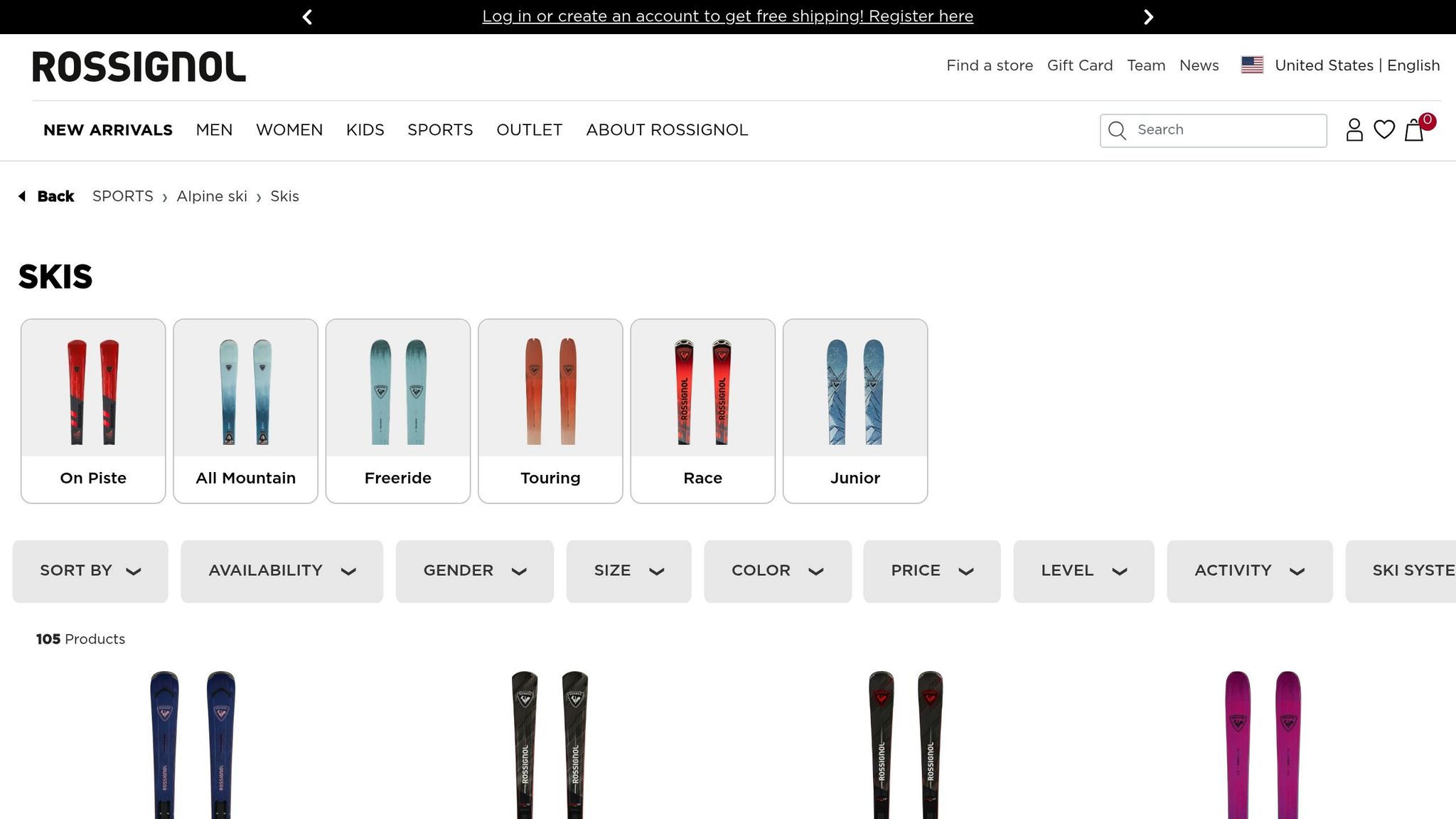
Mentre Snowfeet* si concentra su design che rispettano le ginocchia, gli sci e gli snowboard tradizionali di marchi come Rossignol, Atomic, Elan e Head danno priorità alle prestazioni. Tuttavia, spesso comportano compromessi, specialmente per la salute delle articolazioni.
Peso e portabilità
Gli sci e gli snowboard tradizionali sono, beh, ingombranti. Il loro design lungo e pesante significa che avrai bisogno di una sacca da sci dedicata o di un portapacchi sul tetto per trasportarli. Confronta questo con Snowfeet*, che si adatta comodamente in uno zaino - niente bisogno di attrezzature extra o logistica complicata.
Impatto sul ginocchio e stress articolare
Lo sci e lo snowboard sono sport impegnativi che possono mettere molta pressione sulle ginocchia. Le partenze rapide, le frenate, le rotazioni e i salti che rendono questi sport emozionanti aumentano anche il rischio di lesioni al ginocchio o peggiorano problemi esistenti. Il design più lungo degli sci tradizionali può creare una leva extra sulle ginocchia durante le curve, aumentando lo sforzo - specialmente per chi ha infortuni pregressi o condizioni come l'osteoartrite.
Il dott. M H Binet sottolinea questo problema:
"Lo Ski-Mojo permette agli sciatori con ginocchia deboli o danneggiate o muscoli delle gambe deboli di sciare più a lungo ogni giorno e in effetti prolunga la loro vita sciistica. Infortuni o danni alle ginocchia porteranno a muscoli delle gambe più deboli."
Questa citazione evidenzia un ciclo che molti sciatori affrontano: lo stress alle ginocchia porta a muscoli più deboli, aumentando il rischio di ulteriori infortuni. Mentre gli sci tradizionali sono ottimi per velocità e prestazioni, non sono ideali per chi dà priorità alla salute delle articolazioni.
Versatilità del terreno
Gli sci tradizionali sono progettati per la velocità e le piste aperte, ma possono avere difficoltà su terreni più stretti o tecnici. Per esempio, affrontare percorsi tra gli alberi o snowpark può essere più impegnativo a causa della loro lunghezza e minore agilità. Marchi come Head ed Elan spesso progettano sci per condizioni specifiche, ma la loro forma più lunga può rendere più difficili le curve rapide e strette. Al contrario, i prodotti Snowfeet* offrono una maneggevolezza più reattiva, garantendoti maggiore libertà in ambienti vari.
Prezzo (in USD)
Il costo è un altro fattore da considerare. Un set tradizionale da sci o snowboard richiede un investimento consistente, spesso ben superiore al prezzo di $220 di Snowfeet*. Per chi cerca un equilibrio tra convenienza e funzionalità, la differenza è difficile da ignorare.
Pro e contro
Analizziamo i fattori chiave che influenzano la salute delle articolazioni in queste opzioni amiche delle ginocchia.
| Prodotto | Peso e portabilità | Impatto sulle ginocchia | Versatilità | Prezzo (USD) | Ideale per |
|---|---|---|---|---|---|
| Snowfeet Mini Ski Skates (38 cm) | Ultra-leggero; entra nello zaino | Minimo stress alle ginocchia, ottimo controllo | Limitato a piste battute | A partire da $150 | Principianti, divertimento casual |
| Snowfeet Skiskates (44 cm) | Compatto, altamente portatile | Basso impatto, curve reattive | Ottimo per parchi e piste battute | Da $390 | Sciatori intermedi |
| Snowfeet Skiblades (65–120 cm) | Peso moderato, gestibile | Leva ridotta sulle ginocchia | Eccellente performance su tutta la montagna | $450–$690 | Tutti i livelli di abilità |
| Sci/ Snowboard tradizionali | Pesante; necessita di trasporto speciale | Maggiore sforzo e rischio di infortuni | Focalizzati sulla velocità ma meno agili | $800+ (set completo) | Atleti avanzati |
Come mostra la tabella, i prodotti Snowfeet si distinguono per il loro design che protegge le ginocchia e per la portabilità. Le lesioni al ginocchio non sono uno scherzo - le statistiche rivelano che rappresentano il 18,1–36,7% degli infortuni legati allo sci e il 6,4–17% degli incidenti nello snowboard. Ecco perché scegliere attrezzature che riducono lo stress sulle ginocchia è così importante per la salute a lungo termine delle articolazioni.
Il design compatto di Snowfeet è una svolta. Minimizza la leva sulle ginocchia e assorbe gli urti, rendendolo più gentile durante le curve. Inoltre, il raggio di sterzata più piccolo riduce i movimenti di torsione, cosa particolarmente utile per chi ha problemi preesistenti alle ginocchia.
Ora, confronta questo con sci e snowboard tradizionali. Mentre marchi come Rossignol e Atomic eccellono in velocità e stabilità, i loro design più lunghi e pesanti mettono sotto sforzo extra le ginocchia. Il peso aggiuntivo non solo rende il trasporto un problema, ma aumenta anche lo stress durante l'uso. Certo, sono ottimi per discese ad alta velocità, ma la maggior parte degli sciatori ricreativi non ha bisogno di quel livello di prestazioni, specialmente a costo della salute delle articolazioni.
E parliamo di prezzo. Le configurazioni tradizionali spesso costano oltre 800$, mentre i prodotti Snowfeet variano da 150$ a 690$. È una grande differenza, sia per il portafoglio che per le ginocchia.
Un altro punto a favore di Snowfeet è la versatilità. A differenza dell'attrezzatura tradizionale spesso pensata per condizioni specifiche, i prodotti Snowfeet si adattano bene a vari terreni e tipi di neve. Prendi ad esempio gli Skiblades da 99 cm - affrontano i dossi come un professionista pur essendo più gentili con le ginocchia. Quel bilanciamento tra prestazioni e protezione delle articolazioni è difficile da battere.
In breve, Snowfeet offre un'alternativa intelligente alle configurazioni tradizionali, combinando prestazioni, portabilità e protezione delle articolazioni in un modo difficile da ignorare.
Conclusione
Se stai cercando un'attrezzatura da sci più gentile con le ginocchia, i prodotti Snowfeet stanno fissando lo standard per il 2025. Con più di 50.000 rider in tutto il mondo che hanno già fatto il cambio, queste alternative amiche delle ginocchia dimostrano che puoi goderti gli sport invernali senza mettere sotto stress inutile le articolazioni. Combinano un design intelligente con benefici pratici, offrendo un modo nuovo di affrontare le piste.
Con prezzi che partono da 150$ fino a 690$, i prodotti Snowfeet sono non solo più gentili con le tue ginocchia ma anche con il portafoglio rispetto alle configurazioni tradizionali di marchi come Rossignol e Atomic. Il loro design compatto riduce la leva che può stressare le ginocchia, e la costruzione leggera minimizza l'impatto durante l'uso.
Come ha condiviso Jakub F, "Con questi piccoli sci, ti senti molto più agile, veloce e soprattutto – comodo." Ciò che rende Snowfeet unici è il loro mix di prestazioni e comodità. A differenza degli sci tradizionali che richiedono scarponi ingombranti e sono difficili da trasportare, l'attrezzatura Snowfeet entra in uno zaino e funziona con le tue scarpe invernali normali o con gli scarponi da snowboard. Questa portabilità è una svolta, soprattutto per chi vuole evitare la fatica degli scarponi da sci pesanti e rigidi.
Il feedback dei clienti conferma queste affermazioni, con valutazioni che si attestano costantemente tra 4,9 e 5,0 stelle su tutti i modelli Snowfeet. Gli utenti sottolineano spesso quanto siano facili da imparare, la loro solida costruzione e - cosa più importante - il comfort che offrono, lasciando le ginocchia supportate e senza stress.
Per chiunque sia preoccupato per il dolore al ginocchio o voglia evitarlo del tutto, Snowfeet è la risposta. Che tu scelga i Mini Ski Skates ultra portatili da 38 cm per un divertimento casual o gli Skiblades da 99 cm per affrontare tutta la montagna, ottieni una lavorazione europea di alta qualità con bordi sci in metallo e materiali durevoli. A differenza degli sci tradizionali, che possono sembrare ingombranti e faticosi, Snowfeet ti mantiene leggero e agile sulle piste.
Quindi, se sei pronto per un modo gentile con le ginocchia, divertente e attento al budget per goderti gli sport invernali nel 2025, Snowfeet ti copre.
Domande frequenti
Cosa rende i prodotti Snowfeet più facili per le ginocchia rispetto agli sci e snowboard tradizionali?
I prodotti Snowfeet sono progettati pensando alle tue ginocchia, offrendo una lunghezza più corta e un design leggero che li distingue dagli sci tradizionali. Gli sci tipici di marchi come Rossignol o Atomic spesso misurano 150–200+ cm, agendo come leve lunghe che possono mettere ulteriore stress sulle ginocchia. Gli sci Snowfeet, invece, sono molto più corti - da soli 44 a 120 cm. Questa dimensione compatta aiuta a ridurre le forze di torsione sulle ginocchia, rendendoli un'opzione più gentile per le tue articolazioni.
Inoltre, ogni sci Snowfeet pesa meno di 2 libbre. È molto più leggero rispetto alla maggior parte degli sci o snowboard tradizionali. Questa costruzione ultra leggera significa meno stress sulle articolazioni, offrendoti una discesa più fluida e confortevole. Che tu voglia un tocco divertente allo sci o mantenere le ginocchia felici, Snowfeet offre una scelta a basso impatto e piacevole per gli amanti degli sport invernali.
Che tipo di terreno è più adatto per i Snowfeet Skiskates e Skiblades?
I Snowfeet Skiskates e Skiblades sono perfetti per le piste battute. La loro costruzione leggera e il design compatto li rendono super facili da maneggiare, offrendo un controllo eccellente e curve rapide su discese lisce e ben mantenute.
Anche se brillano davvero su terreni battuti, possono gestire anche un po' di fuoripista leggero - purché la neve non sia troppo profonda. Se cerchi un'alternativa divertente e gentile con le ginocchia rispetto agli sci o snowboard tradizionali, questi potrebbero essere la tua prossima avventura invernale.
Posso usare i Snowfeet Mini Ski Skates con normali scarponi invernali e sono adatti ai principianti?
I Snowfeet Mini Ski Skates funzionano perfettamente con normali scarponi invernali o scarponi da snowboard, rendendoli super comodi. Grazie al loro design semplice e alle dimensioni compatte, sono una scelta fantastica per i principianti - sono facili da controllare e non richiedono molta pratica per prenderci la mano. Inoltre, la loro costruzione leggera significa meno stress sulle ginocchia rispetto agli sci o snowboard tradizionali, rendendoli un'opzione più confortevole per il divertimento invernale.
Post correlati del blog
- Sport invernali gentili con le ginocchia: goditi l'inverno senza dolore (scopri attrezzature delicate)
- Hai dolore alle ginocchia dopo lo sci? Scopri sport invernali e attrezzature delicate
- Come scegliere gli sci se ho problemi alle ginocchia o articolazioni (opzioni a basso impatto)
- Quali sono gli sci migliori per chi ha precedenti infortuni al ginocchio (opzioni tolleranti)





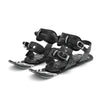
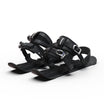
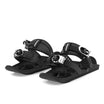

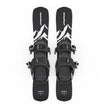
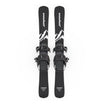

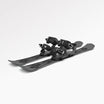
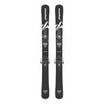

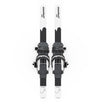






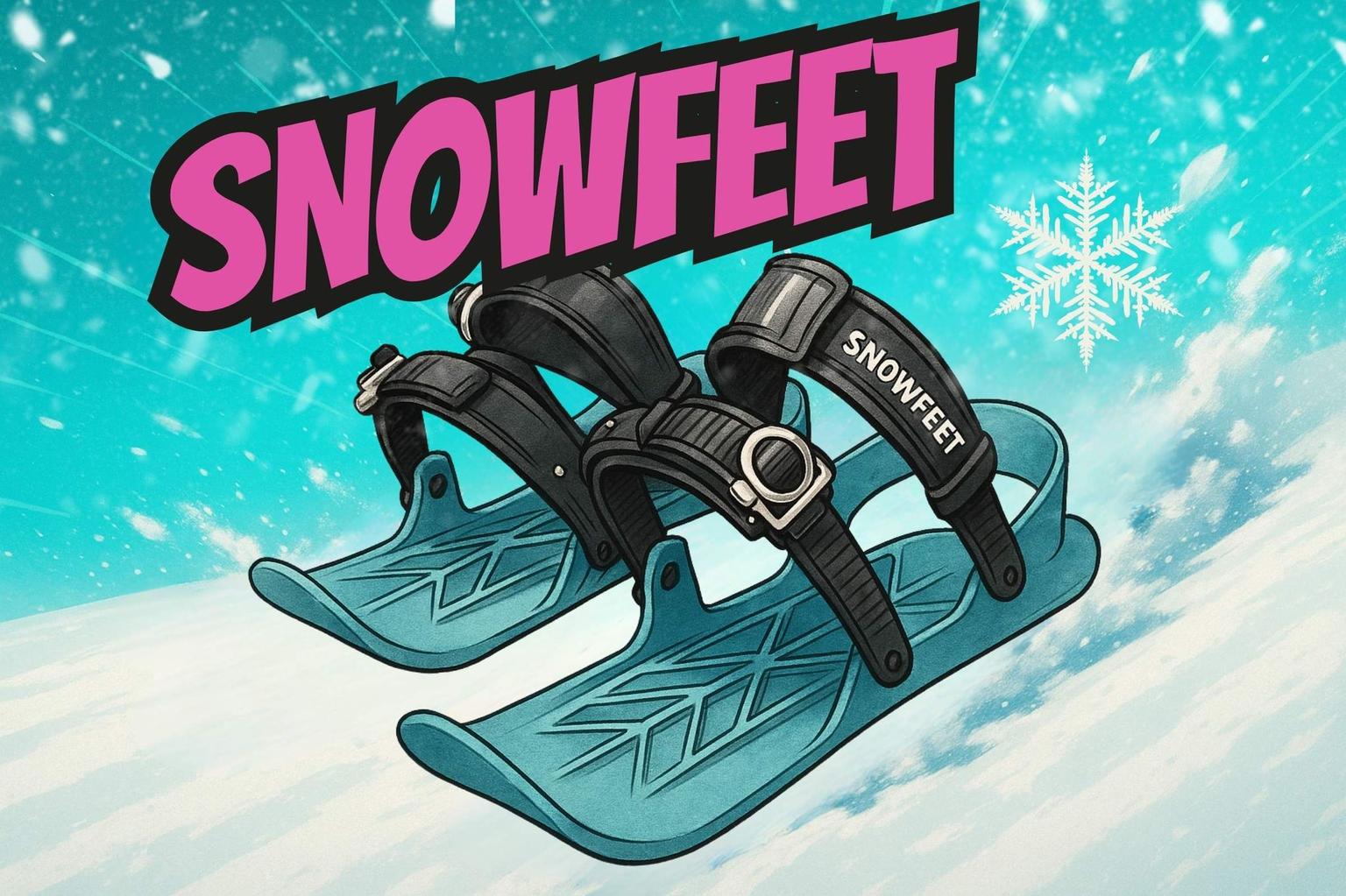

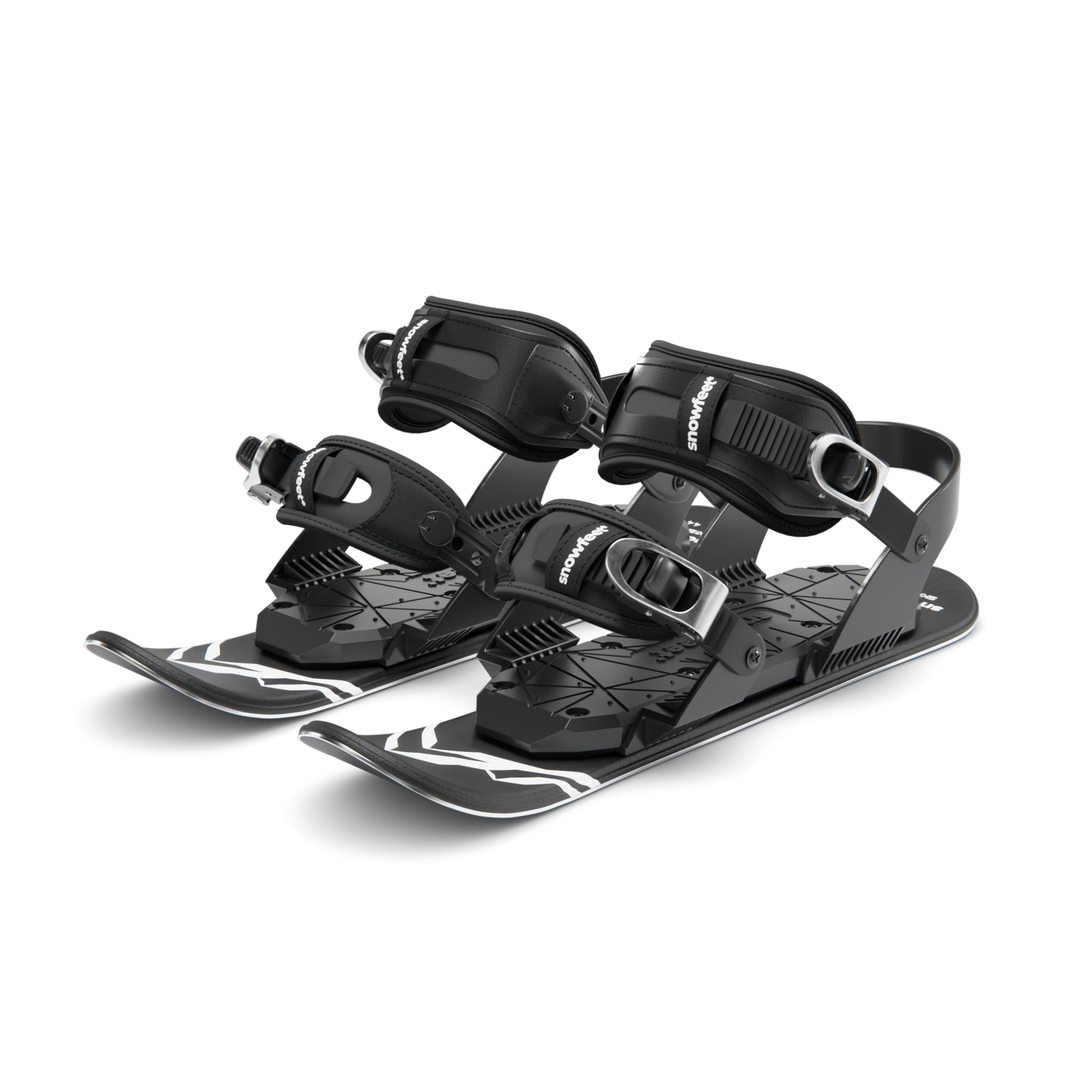

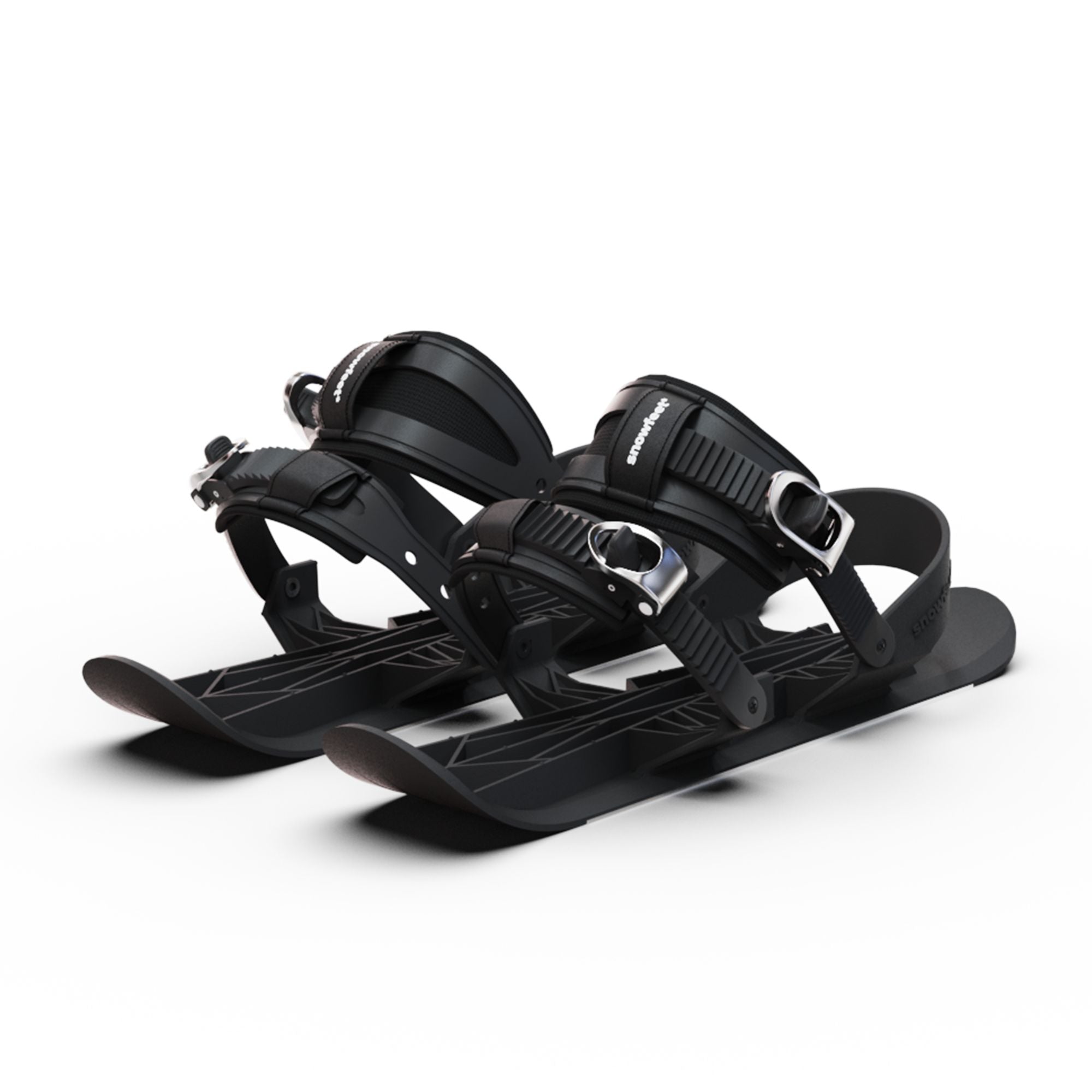
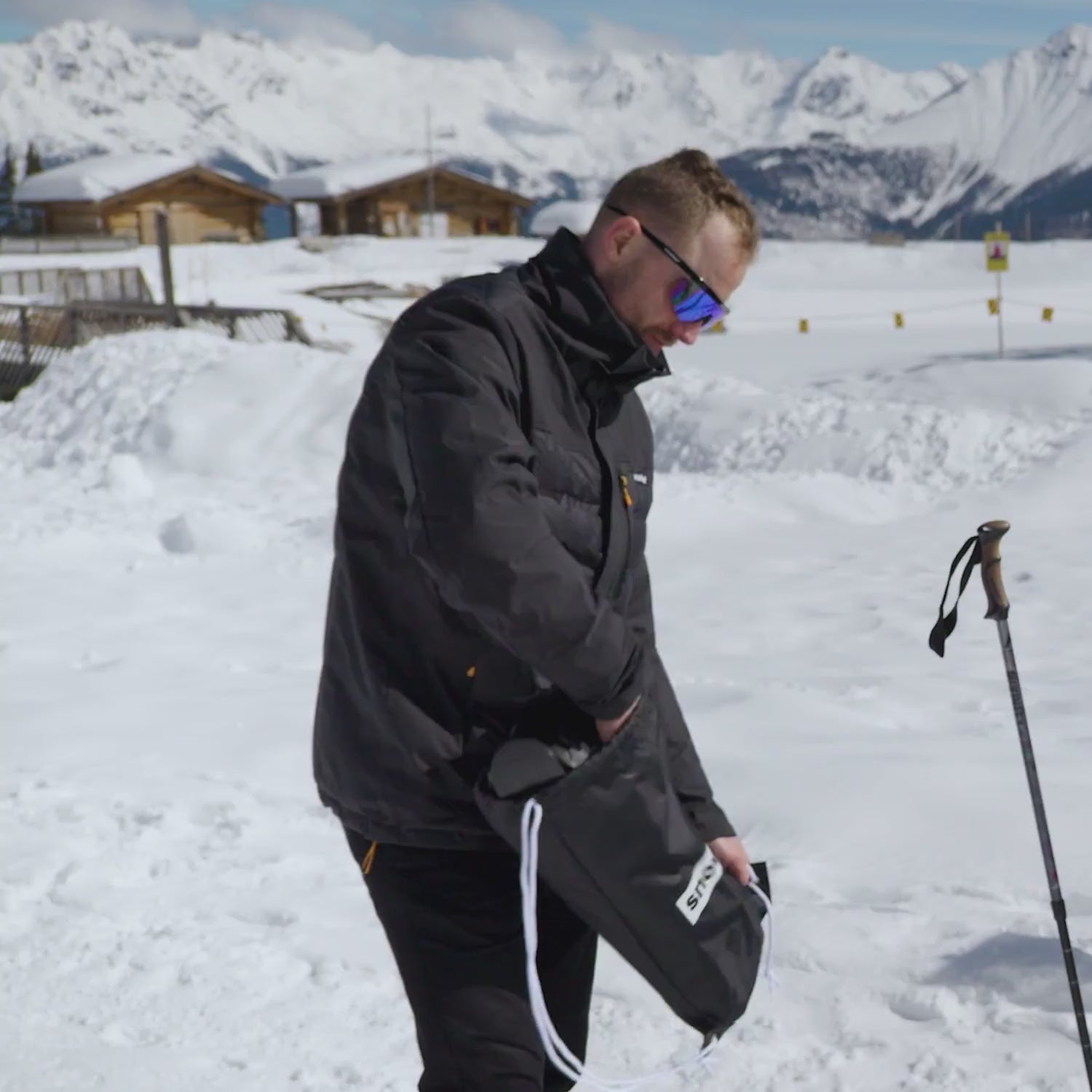
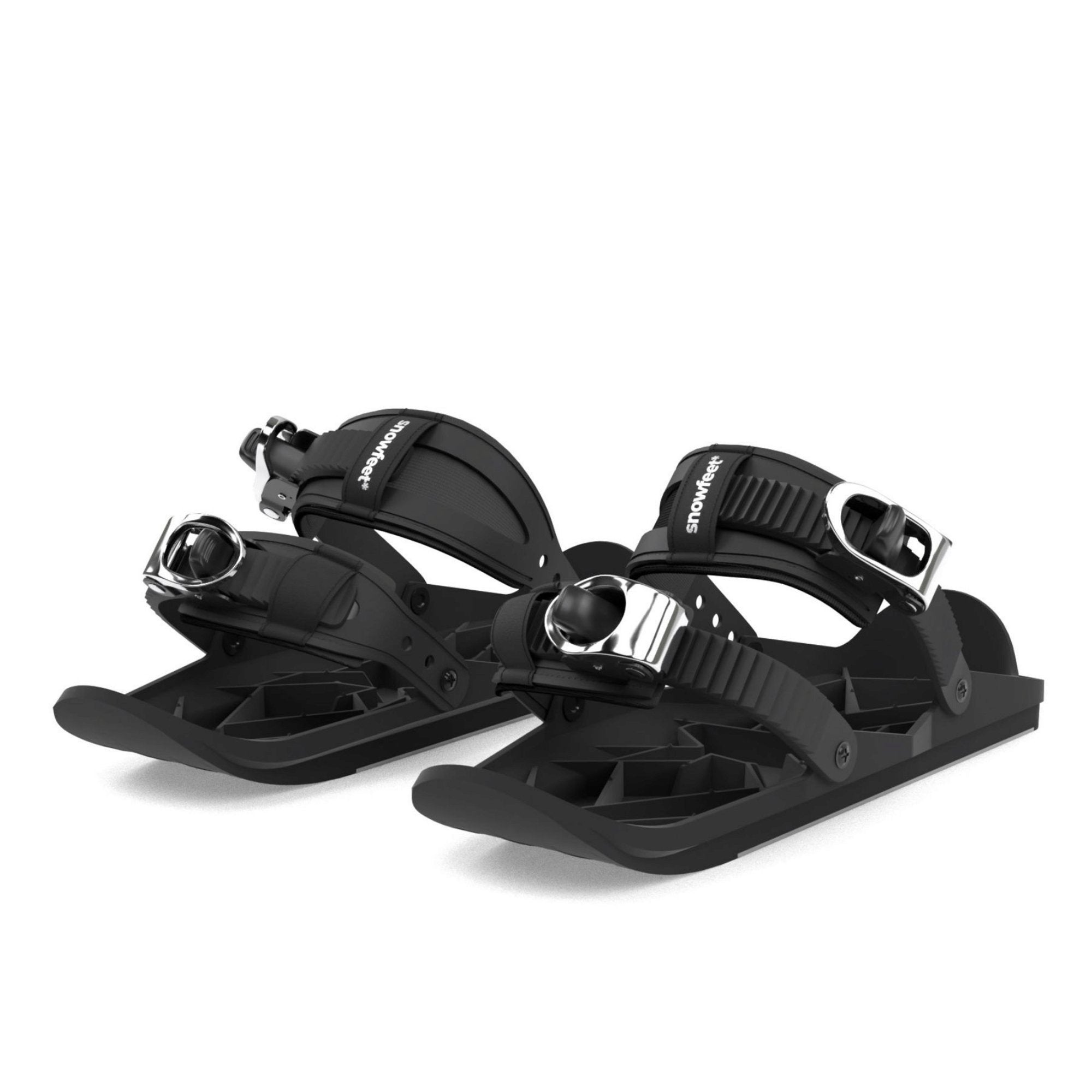
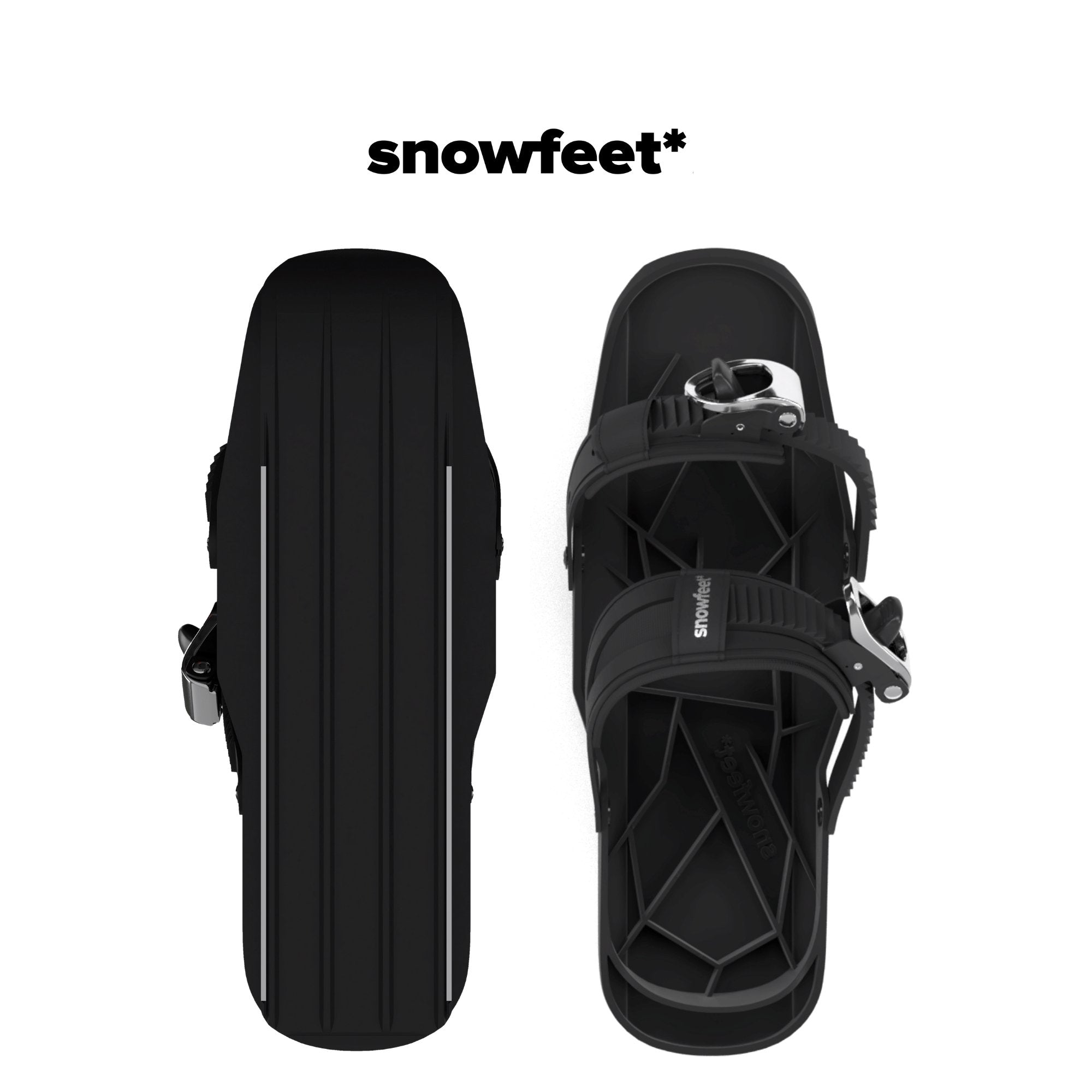
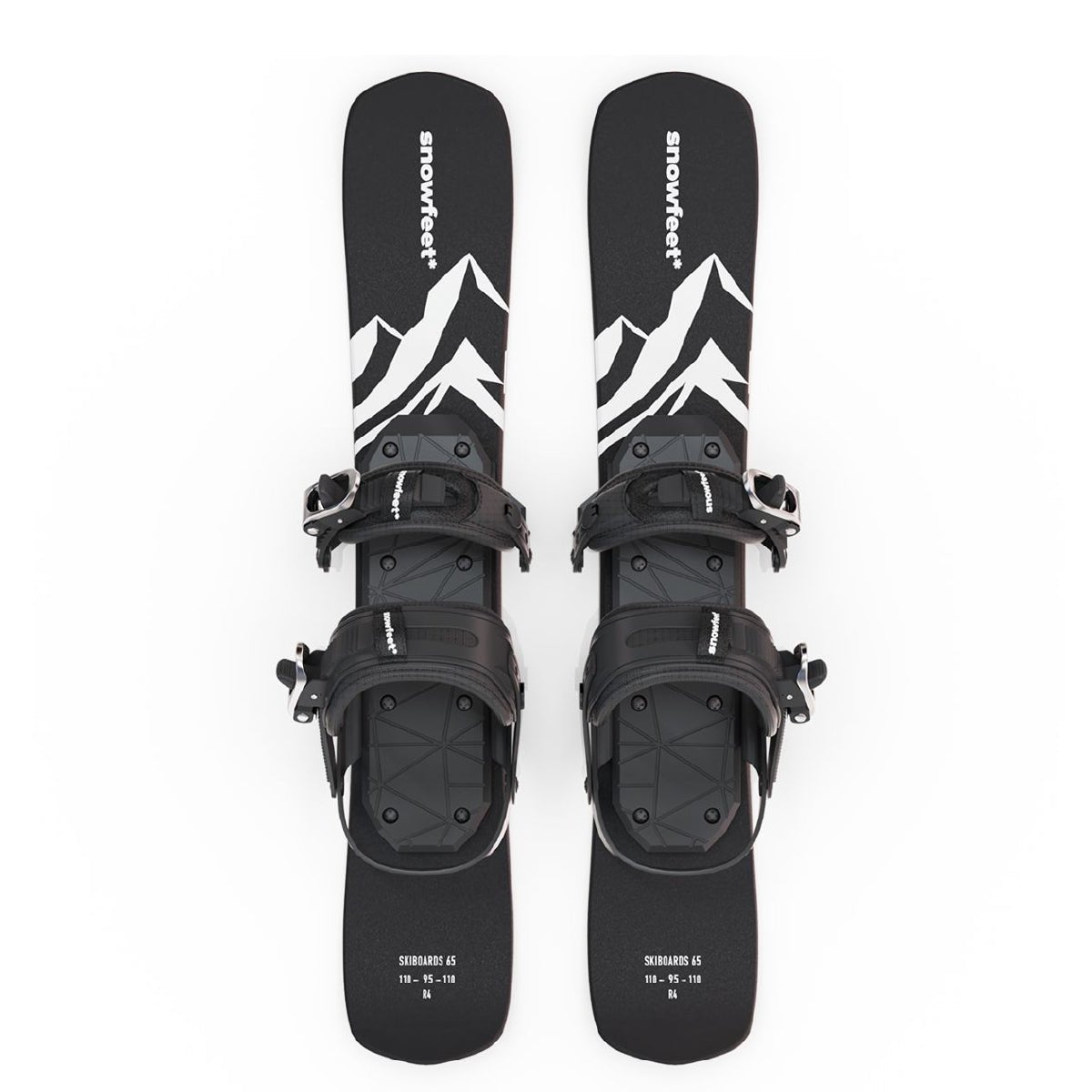
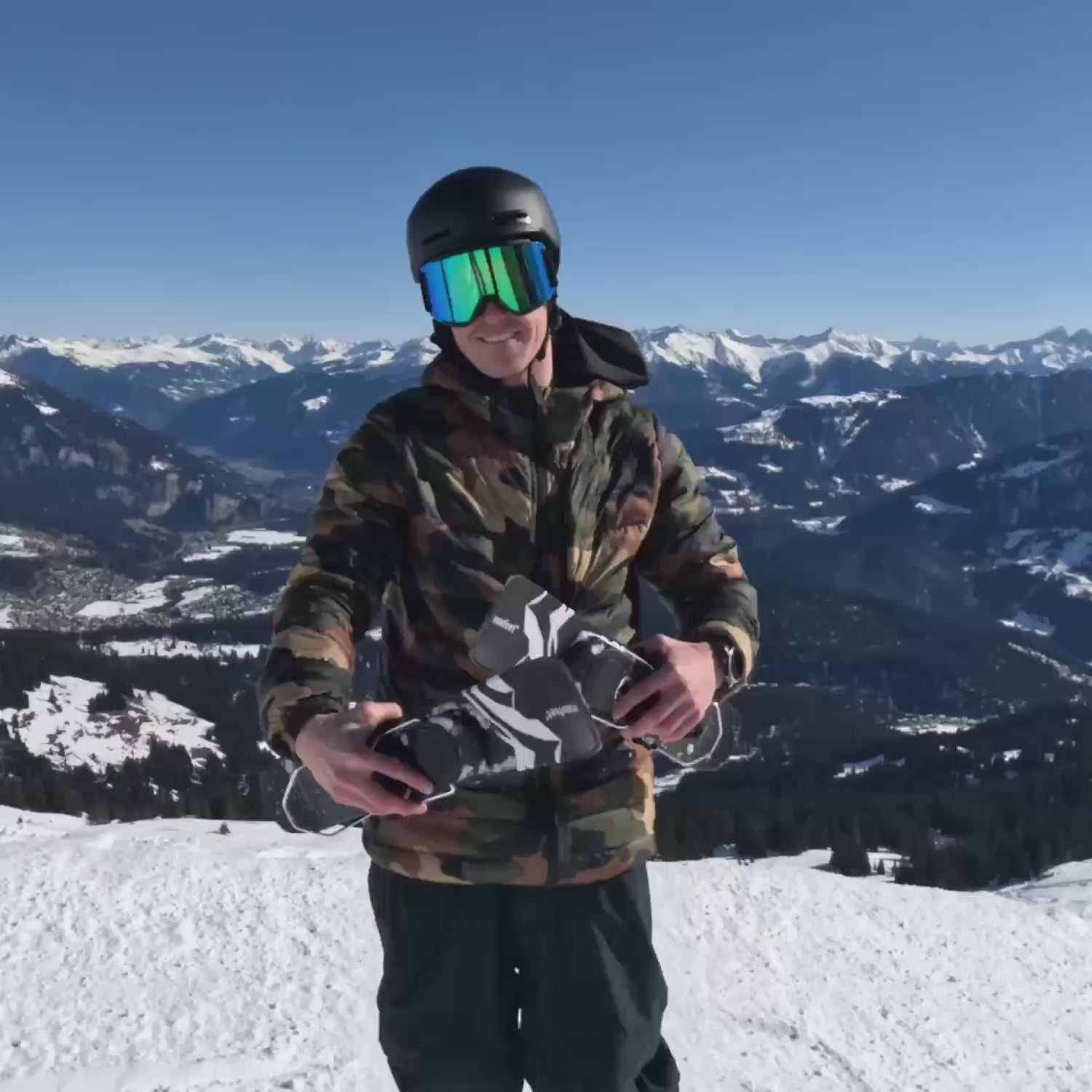
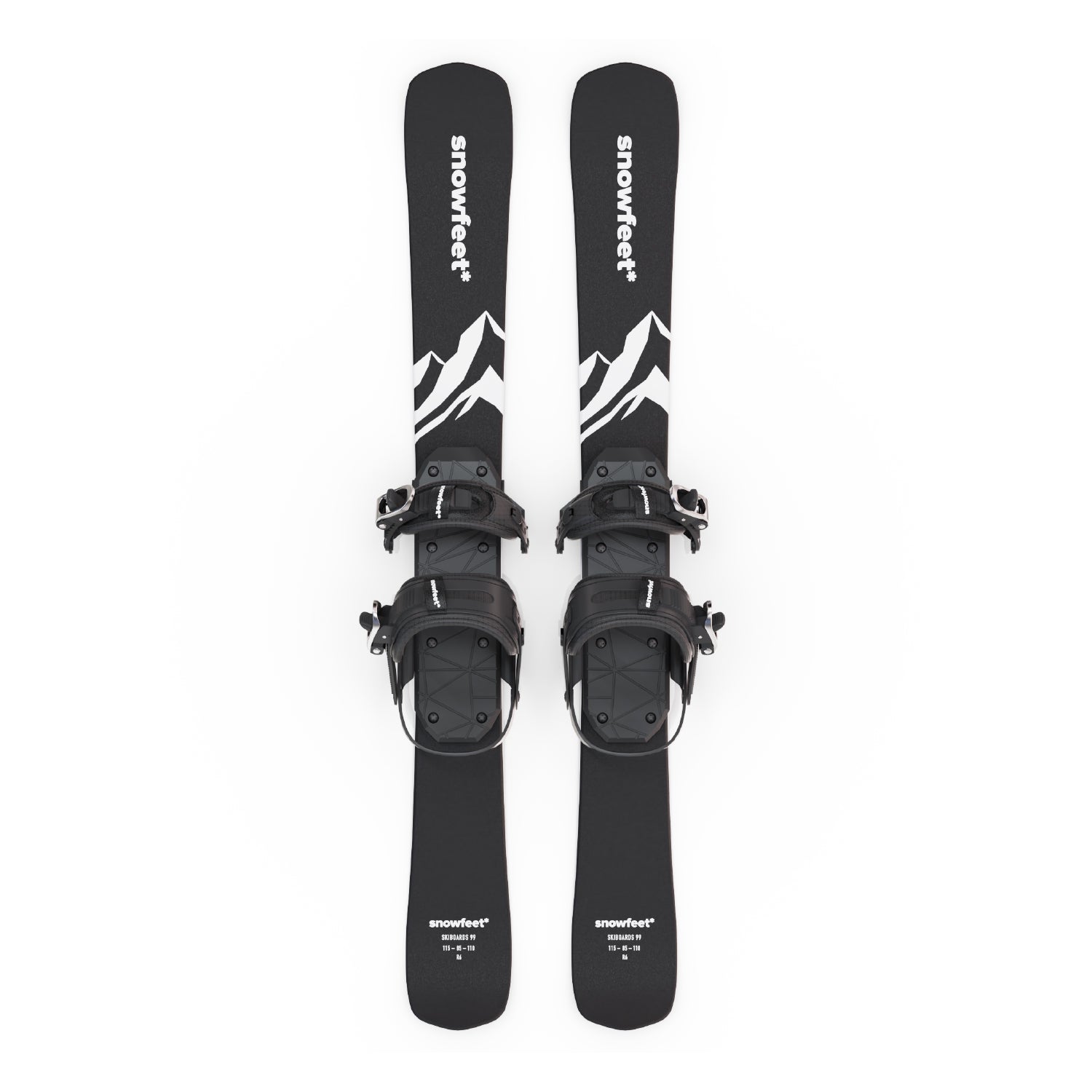
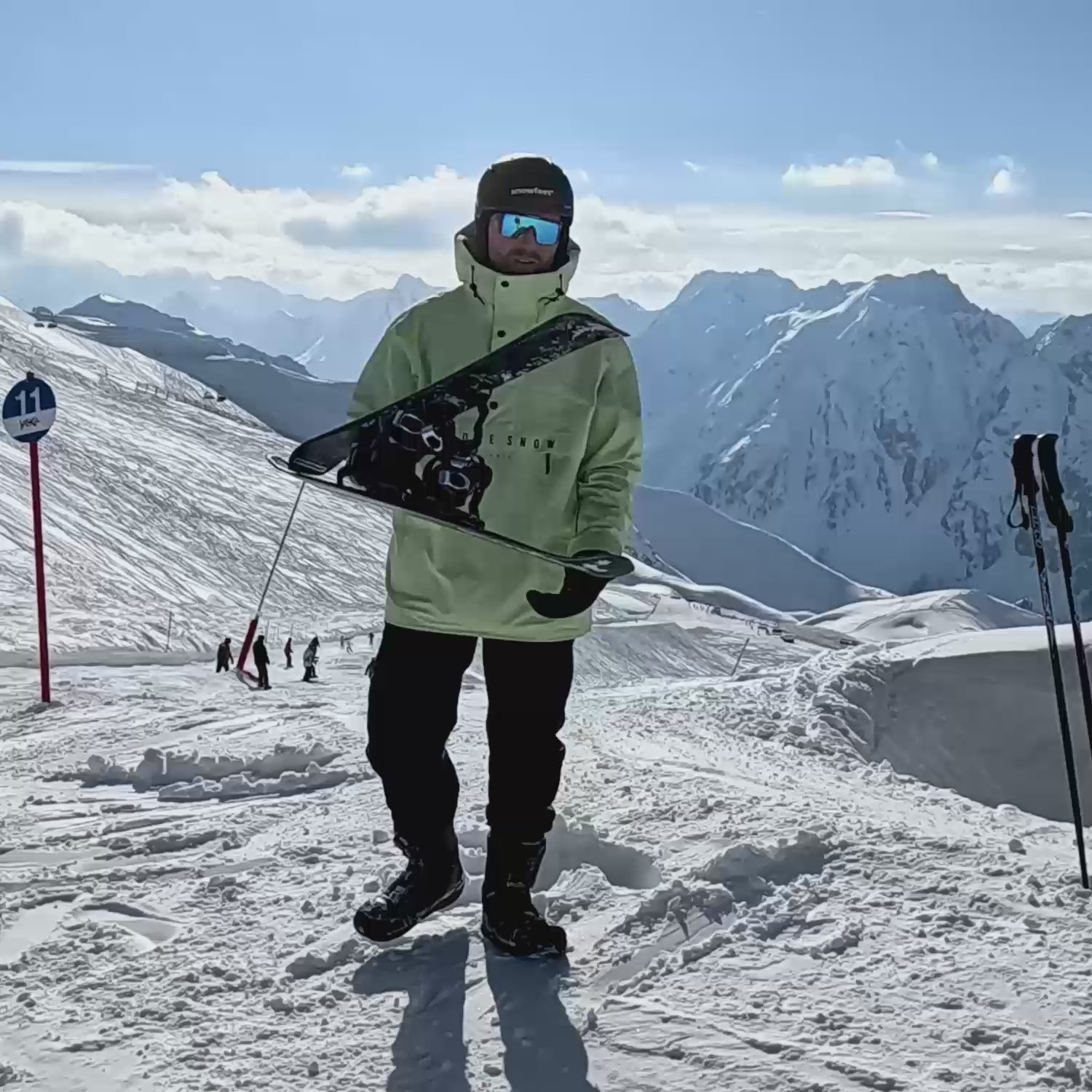
Lascia un commento
Questo sito è protetto da hCaptcha e applica le Norme sulla privacy e i Termini di servizio di hCaptcha.